
Hitch himself winds a clock in "Rear Window," a singular thriller driven by precise timing
It's wholly appropriate that Turner's October schedule is autumnal in feel, kicking off the first day of the month - at 10 a.m. (all times are est.) with Gillian Armstrong's dark yet expansive
"Mrs. Soffel" (1984), starring Diane Keaton, at her most tremulous, and Mel Gibson when he was more interesting as a blank-slate-of-an-actor. It's difficult to project now. We know way too much about Mel Gibson to get lost in his performances.
Stick around for the day and you can catch W.S. Van Dyke II's
"Rose Marie" (1936) at 4 p.m. - a filmic operetta as woodsy as it is melodic - and Hal Ashbuy's Woody Guthrie's biopic,
"Bound for Glory" (1976) at 8 p.m., a film so atmospheric that you can smell the pervasive camp fires throughout the plot. John Ford's
"The Grapes of Wrath" (1940), a sort of template for Ashby's film, follows later, airing at 1:30 a.m. 2 October.

Alfred Hitchcock's singular
"Rear Window" (1954)- one of my personal favorites and seemingly a Turner monthly staple - is on hand 2 October at 9 p.m. Aside from that remarkable set designed by Joseph MacMillan Johnson and
Hal Pereira (the real stars of the film) and Hitch's pervasive use of ambient sounds, the movie is noteworthy for its ambiguous feelings towards its alleged villain, Lars Thorwald, as played by Raymond Burr - a character guilty of murdering his wife and yet poignantly sympathetic, Thanks to Burrs' brief, distanced but incredibly complicated performance.
If you can keep awake, there's Edward Dein's nifty
"Shack Out on 101" (1955), airing at 2 a.m. 3 October and living up to its title, as it takes you from the comfort of you couch or bed and into a diquieting, often frightfully funny vision of spies, nuclear secrets and diners with bad food.
Funny, but in a decidedly different way is William Wyler's stab at a roadshow musical - the graceless, indifferently directed
"Funny Girl" (1968), inexplicably chosen by Alec Baldwin and Robert Osborne as an "essential" and airing in that prime Saturday night spot at 8 p.m. on 3 October. This was Jule Styne's desperate attempt to recreate the magic of his "Gypsy," but all we get is a screen-hogging and very hammy Barbra Streisand delivering one bad line reading after another and inadequately lip-syncing her songs. In case you haven't guessed it, I abhor this film - and I say that as a die-hard film-musical fan. Feel free to disagree.
Turner dusts off a rarely-seen John Frankenheimer curiosity,
"The Horseman" (1971), starring Omar Sharif and Leigh Taylor-Young, for an early-morning 4:15 a.m. showing on 3 October. Later that morning, catch Dennis O'Keefe in a breezy performance in Allan Dwan's antic
"Brewster's Millions" (1945) about a guy trying to lose a million dollars in order to inherit a lot more.
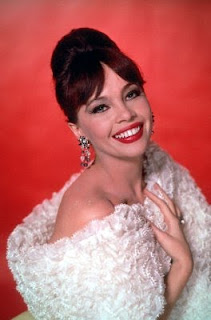
The celebration of October's Star of the Month, Leslie Caron, kicks off at 9 p.m. 5 October with the gamine star's most representative films - Vincente Minnelli's sublime
"An American in Paris" (1951), which gets better with each viewing; Minnelli's painterly
"Gigi" (1958), Charles Walters' one-song miminalist musical,
"Lili" (1953) and Walter's elegant "Cinderella" dansical,
"The Glass Slipper" (1955).
I suggest you watch them all.
Immediately preceding these screenings at 8 p.m. is Osborne's "Private Screenings" episode with Caron in which she reveals that the singing voice in "Gigi" which sounds so much like her own, well, wasn't. A great job of dubbing here.
Goldie Hawn, meanwhile, gets a night of her own - well, sort of - on 7 October, starting with 10 p.m. screenings of three of her '70s go-go comedies, Milton Katselas'
"Butterflies Are Free" (1972), Gene Saks'
"Cactus Flower" (1969) and Roy Boulting's
"There's a Girl in My Soup" (1976), all based on plays. In "Butterflies" and "Cactus," respectively, Hawn played the roles created on stage by Blythe Danner and Brenda Vaccaro. Peter Sellers is her co-star in the third title.
Most of 8 October is playfully devoted to films with the word "Girl" in the title, several of them British - such John Mills'
"Gypsy Girl" (1966) and two by Desmond Davis,
"The Girl with Green Eyes" (1964) and
"A Nice Girl Like Me" (1969). The one notable American exception is William Castle's
"13 Frightened Girls!" (1963), a frightfully good Nancy Drew-like caper, set London and full of page-turning intrigue. Castle, who was very good with actors (see Jean Arliss/Joan Marshall in "Homicidal"), elicits an excellent, impressively precocious performance from Kathy Dunn who plays Candace Hull, an inquisitive teen who likes taking risks. (The film was originally titled "The Candy Web.") Dunn, a New York actress who spelled her first name Cathy when she starred for Morris Engel and Ruth Orkin in "Lovers and Lollipops" (1956) and when she played Louisa Von Trapp, one of the kids, in the original 1959 Broadway production of "The Sound of Music," should have had a major screen career after "13 Frightened Girls!" She does incredible work in it.
Another "Girl" film, David Lowell Rich's
"Hey Boy! Hey Girl!," is an oddity starring Louis Prima and Keely Smith. A must-watch - at 6:15 p.m. Don't change the dial. What follows are also must-sees - Preston Struges'
"Sullivan's Travels" (1941), Lewis Milestone's
"Hallelujah, I'm a Bum" (1933), my favorite Jolson flick, and Gregory LaCava's elegant
"My Man Godfrey." (1936).

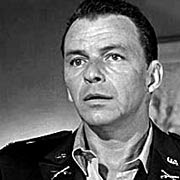
Sinatra, in one of his best performances, in Frankenheimer's "The Manchurian Candidate." Leigh is pretty good, too
John Frankenheimer's
"The Manchurian Candidate" (1962), airing at 8 p.m. 9 October, is arguably more auspicious today than the day it was released. Much of the praise that goes to the film tends to revolve around Angela Lansbury's towering performance, George Axelrod's silky smooth screenplay and Frankenheimer himself. But this time, keep your eye on Frank Sinatra's superb underplaying and particuarly on his tense, sexy interplay with a very good Janet Leigh in the train sequence.
BTW, Lansbury lost her Oscar that year to Patty Duke who essentially mugged her way through Arthur Penn's hugely over-valued
"The Miracle Worker," airing on Turner at 6 a.m., 28 October.

The beautiful and very talented Kassie DePavia, one of my favorite soap stars ("One Life to Live"), is the female lead in Sam Raimi's
"Evil Dead 2: Dead by Dawn" (1987), on the schedule for 2:15 a.m., 10 October. This woman should have been a big-screen star a long time ago. I'd watch her in
anything - even this.
Dazzling Kassie is anything but evil
Paul Muni gives an easy-to-watch performance in one of his last films, Daniel Man's
"The Last Angry Man" (1959). It airs at 3 a.m. 11 October and offers fine supporting work by David Wayne and Betsy Palmer.
Turner has several perennial titles ("Vertigo," "West Side Story" and "Lawrence of Arabie," among them) and Sam Peckinpah's
"Junior Bonner" (1972), at 3:15 p.m. 11 October, is apparently the newest addition to the stable. Great! It's a most flavorsome family drama, set against a rodeo backdrop, with Robert Preston and Steve McQueen ideally cast as father and son - and Ida Lupino who, as wife and mother, demonstrates that great actresses don't age. They get better. Here, she's the same Ida of her early noir films.
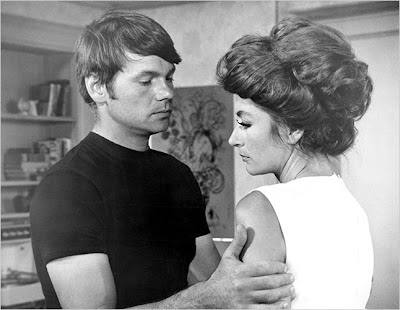
Gary Lockwood and the inimitable Anouk Aimee in Jacques Demy's "Model Shop"
You can enjoy a cosmopolitan afternnon on 12 October when Turner devotes its afternoon schedule to art-house favorite Anouk Aimee, who will be showcased beginning at 1:45 p.m. in Federico Fellini's seminal
"8½" (1963), Jacque Demy's only American film,
"Model Shop" (1969) and Sidney Lumet's long-missing
"The Appointment" (1969), all made to be seen with a Martini in hand.
Anouk's time in the spotlight will be followed immediately with more Caron - starting at 8 p.m. with Nunnally Johnson's
"The Man Who Understood Women" (1959), Joshua Logan's Oscar-nominated
"Fanny" (1961) and Ralph Nelson's
"Father Goose" (1964).

If Anouk and Leslie aren't French enough for you, you can get your fix with these back-to-back features starting at noon on 13 October - Otto Preminger's
"Bonjour Tristesse" (1957), Richard Brooks'
"The Last Time I Saw Paris" (1954), Martin Ritt's
"Paris Blues" (1961) and Robert Parrish's
"In the French Style" (1963).
Two B-movie personalities from the 1950s - singer Jill Corey and producer-to-be James Komack - get the star spots in David Lowell Rich's lively
"Senior Prom" (1958) which airs 10 a.m. 15 October, right before Jack Arnold's campy
"High School Confidential" (1958). Stick around for Gene Fowler Jr.'s
"I Married a Monster from Outer Space" (1958), about a woman (Gloria Talbot) who, like so many of us, doesn't recognize the person sleeping next to her. (That would be Tom Tryon.)
A quartet of evocative films set during the Depression kick off at 8 p.m. that night with Peter Bogdanovich's
"Paper Moon" (1973), The Coens'
"O Brother, Where Art Thou?" (2000), Martin Ritt's
"Sounder" (1972) and Sydney Pollack's
"They Shoot Horses, Don't They?" (1969). The stars are Clooney, Fonda (Jane) and the O'Neals.
The aforementioned Angela Lansbury is offered up in a double-bill on 16 October with Robert Stevens'
"In the Cool of the Day" (1963) and Delbert Mann's compelling
"Mister Buddwing" (1966), starting at 4:45 p.m.
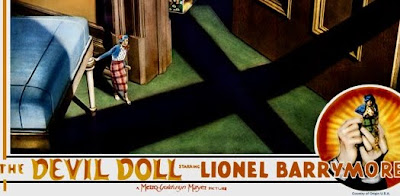
"The Devil Doll": Lionel Barrymore's comic triumph
Wake up on Saturday, 17 October (7:30 a.m.) with Tod Browning's wonderful
"The Devil Doll" (1936), with Lionel Barrymore doing a bang-up job (often in drag) as a madman with killer dolls (actually, miniturized humans). I wish Turner would recruit Drew Barrymore to introduce and comment on this title. I'd love to here her observations.
It's a particularly satisfying day for movies on Sunday, 18 October. Otto Preminger's
"Anatomy of a Murder" (1959) gets things moving at 1 p.m., followed by John Huston's
"The Misfits" (1961) Later, at 8 p.m., there's a Robert Redford double-bill - Michael Ritchie's
"Downhill Racer" (1969) and Gene Saks'
"Barefoot in the Park" (1967). In-between at 6:15 p.m. is Raoul Walsh's
"High Sierra" (1941). A perfect movie day.
More Leslie Caron on 19 October with Bryan Forbes' sexy
"The L-Shaped Room" (1962) at 8 p.m., and Curtis Bernhardt's little-seen
"Gaby" (1956), a film that Caron reputedly hates, at midnight.
Me? I kinda like it.

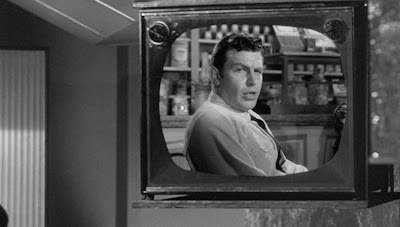
Another good day: 20 October - Richard Brooks'
"Elmer Gantry" (1960) at 8:30 a.m.; Frank Capra's
"Pocketful of Miracle" (1961); Elia Kazan's
"A Face in the Crowd" (1957) and William Wyler's
"The Children's Hour" (1961) which boasts fine acting ensemble and two great Grande Dame performances by Faye Bainter and Miriam Hopkins.


Thelma Ritter, Clark Gable and Marilyn Monroe in "The Misfits"; Andy Griffin in "A Face in the Crowd"; poster art for "Elmer Gantry," and
Audrey Hepburn, one of the first-rate ensemble of William Wyler's "The Children's Hour"
Two by J. Lee Thompson on 21 October. Each one boasts an intriguing cast. First, rthere's Jack Buchanan, Brenda de Banzie and Diana Dors in
"As Long As They're Happy" (1957), at 4:45 p.m. Then, Maximilian Schell, Samantha Eggar and Ingrid Thulin ignite Thompson's creepy little thriller
"Return from the Ashes" (1965), airing at 6:15 p.m.

The most beautifully awful "South Pacific"
How can a movie that has one of Rodgers and Hammerstein's greatest song scores, provocative plot lines about prejudice and discrimination, gorgeous scenery and first-rate Leon Shamroy cinematography (and,
yes, I like the color filters) be so awful? Watch
"South Pacific" (1958) - at 3:445 p.m. 22 October - and decide for yourself. (A hint: The performances don't help matters.)
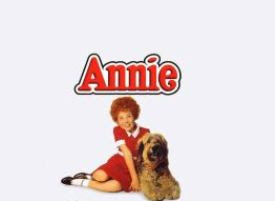
Much better - but hugely underrated - is John Huston's
"Annie" (1982), much, much better than the show it's based on, better than the watered-down but beloved Rob Marshall TV version and definitely better than critics would have you believe. This time, enjoy Albert Finney (who appropriates Huston's vocal inflections for the role of Daddy Warbucks), Carol Burnett (coaxed by Huston to "play it soused" in one long drunk scene as Miss Hannigan) and Aileen Quinn who, as Annie, is reminiscent of a rambunctious kid from the "Our Gang" shorts.
Mark down 8 p.m. 23 Friday. That's when Turner airs Charles Laughton's compusively watchable
"The Night of the Hunter" (1955), based on a James Agee script. Mitchum stars.

Two with Tuesday on 24 Saturday: The sublime Weld stars in two defining performances in Noel Black's "Pretty Poison" (1968) and George Axelrod's "Lord Love a Duck" (1966), with Anthony Perkins and Roddy McDowell co-starring, respectively. Axelrod also wrote "Breakfast at Tiffany's" and he and then-director John Frankenheimer both had Marily Monroe in mind as Holly Golightly. Reportedly disappointed that the role went to Audrey Hepburn (under the aegis of new director Blake Edwards), Axelrod wrote "Duck" specifically for Weld. It was supposed to be his new, improved "Breakfast at Tiffany's".
The very good director James Goldstone ("Red Sky at Morning"), who died way too young, has fun with James Garner and Katharine Ross (co-stars in the aforementioned "Mr. Buddwing") in
"They Only Kill Their Masters" (1972), showing at 6 p.m. 24 October. June Allyson came out of retirement for a cameo - as a lesbian, no less.
I'll be there for Henri-Georges Clouzot's masterful
"Diabolique" (1955) - 2:15 a.m. 26 Monday. Who could ignore Simone Signoret?

Jack Carson watches as Judy Holliday and Jack Lemmon break up in "Phffft!"
The day continues with a string of game comedies about break-ups, infidelities and other assorted adult bad behavior. It starts at 7:30 a.m. with David Miller's
"Happy Anniversary" (1959) and continues with Mark Robson's
"Phffft!" (1954), Melvin Frank's
"The Facts of Life" (1960). Stanley Donen's
"Once More, with Feeling" (1960), George Stevens'
"Woman of the Year" (1942), Michael Gordon's
"Boys' Night Out" (1962) and Melville Shavelson's
"Houseboat" (1958).
Later that night - yes, more Leslie Caron. Threeidiosyncratic titles that I happen to like - Paul Magwood's
"Chandler" (1971), with the much-missed Warren Oates; the short version of Joseph Sargent's
"Goldengirl" (1979) with the perfectly cast Susan Anton in the title role, and Ken Russell's
"Valentino" (1977), with Rudolf Nureyev in the title role.
Byron Haskin directed George Hamilton and Suzanne Pleshette in
"The Power" (1968), a groovy thing about psychic powers with a psychdelic touch that shows at 10 p.m. 27 October.
The documentary
"Easy Rider, Raging Bulls," based on the book about '70s filmmaking is being shown at midnight on 29 October, surrounded by films by arguably the era's best representatives of maverick filmmaking - Hal Ashby (
"Harold and Maude"), Dennis Hopper (
"Easy Rider") and Bob Rafelson (
"Five Easy Pieces").


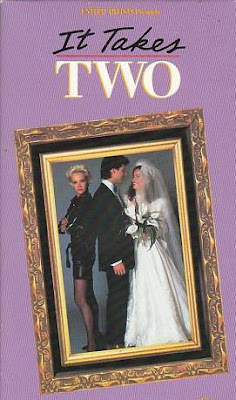





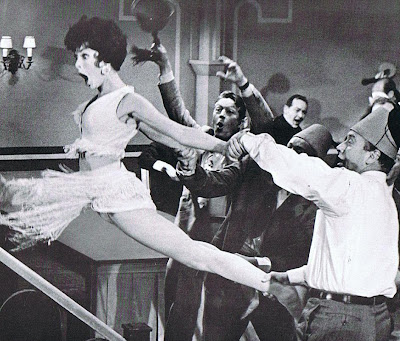













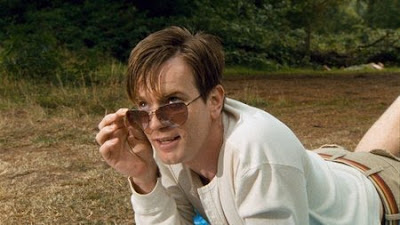
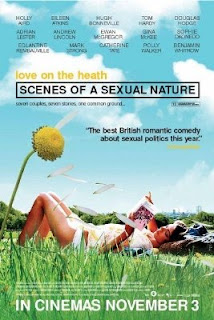


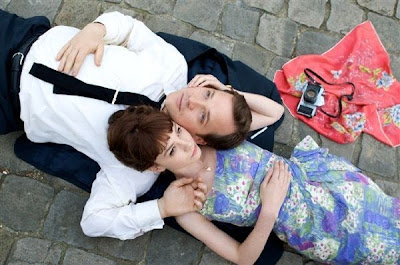




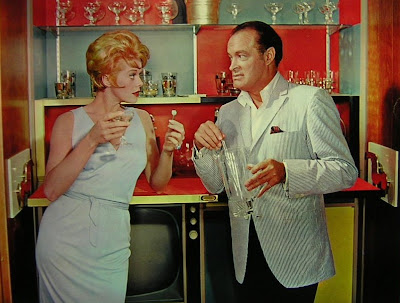

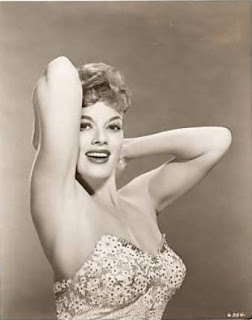
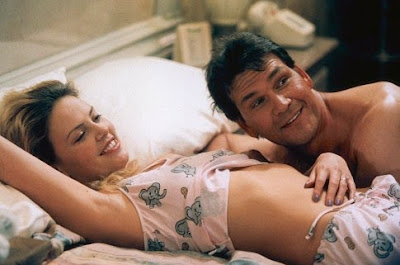




 The pattern is a free download from
The pattern is a free download from 





















